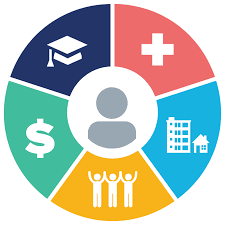Information is power, so goes the adage. But what information is really needed to ensure equity, access, affordability and quality of healthcare is availed to all who seek healthcare services? This is a question that any government or investor in service delivery needs to ask and have answers.
One of the greatest determinants of whether implementations are successful or not is the statistics available in decision-making. Reliable, authentic, and factual healthcare statistics and data are crucial in determining factors such as where and in what to invest, resource allocation, policy guidelines, and areas of intervention.
Jayesh Saini acknowledges that healthcare statistics cover a very broad spectra of issues that determine how governments and organizations operate. Giving an example, he pointed out that currently most nations and WHO are giving daily updates on the status of the COVID-19 pandemic giving various statistics such as infections by age, gender, severity, hospitalizations, deaths, recovered persons, and vaccination levels. This data is informing the relevant authorities on mitigation factors, areas of intervention, and what resources are required amongst others. Despite the devastation the virus has caused, lessons learnt have opened service providers to the reality of where they are at.
For example, there is a better idea of how many beds there are in the hospitals, the level of critical care facilities, and commensurate personnel in various levels of hospitals for better planning. Again, it has been said that the people who have been most at risk are those with comorbidities. Various questions have arisen from this with many people wanting to know what the statistics were before the COVID-19, especially of fatalities due to these diseases, levels of their immunity-boosting, and where they are most prevalent. Such data, even if it exists is localized and does not have a national outlook, because various service providers have systems in place that monitor disease patterns for their own organizational planning.
In the same manner, this should be the trend for all diseases, especially on a national level. Real-time data should always be available on diseases detected, where they are, severity, mortalities due to them, medical interventions being used, effectiveness, resources being utilized or needed including personnel and patterns of the diseases, Jayesh points out. In many countries, like Kenya, this information is provided only post censors and does not, therefore, reflect the real-time trends. Whereas this gives some level of direction on interventions, it leaves many missing links to accurate interventions.
Jayesh Saini maintains the position that the government should have a central database that is fed by all the health facilities with such daily statistics. This means that all healthcare services providers – both public and private must invest in a healthcare ICT system that is interconnected in such a way that the government has the live data so as to keep abreast with disease and care patterns. This will help appropriate the resources accordingly and also be able to detect if there is any outbreak faster than when the news breaks when things are already too severe and turned into emergencies.
We believe that it is a noteworthy suggestion that the government should consider and at the least have stakeholders meeting on this very important aspect of healthcare.

 General News1 week ago
General News1 week ago
 General News4 days ago
General News4 days ago
 Politics4 days ago
Politics4 days ago
 General News2 days ago
General News2 days ago














